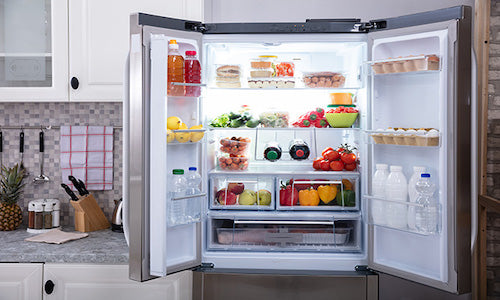
Choosing the right refrigerator for your home is key, whether it’s for residential or commercial use. Refrigerators run continuously, so selecting an energy-efficient model suited to your needs can help save on long-term costs including both maintenance and energy cost. This guide covers important factors for choosing right refrigerators and freezers for home, business, or hospitality environments.
What to consider:
1. Types of Refrigerators
Understanding the types of refrigerators is a great starting point. Manufacturers design refrigerators in various styles, providing solutions for multiple purposes. Key types include upright and chest models, which can either be freestanding or built-in. Here are some main points for each type:
- Upright refrigerators are the most common and easiest to install, available in different sizes and configurations.
- Under-counter refrigerators are compact and ideal for constrained spaces, such as bars or restaurants, fitting perfectly under countertops.
- Built-in or embedded refrigerators integrate seamlessly into cabinetry but may be challenging to align properly and require both ventilation and plug-in space.
- Freestanding refrigerators may not match cabinetry but offer flexibility in placement and easy replacement.
2. Refrigerator Configurations
Shelf and drawer layout, as well as placement location, are all part of refrigerator configuration, and they may impact daily convenience. Choose a layout where shelves and door racks meet your needs for bottle and carton storage. Here’s what to consider regarding freezer placement:
- Top-freezer models are energy-efficient, as the freezer is farther from the compressor, saving 10%-25% on energy costs compared to bottom-freezer models.
- Bottom-freezer models offer larger freezer capacity and often feature drawer dividers for easy access.
- Side-by-side models allow convenient access to both fridge and freezer sections but require wider space.
3. Door Type and Aesthetics
The door style and look also play a role in reliability and appearance. Solid door refrigerators are common which are credited to their outstanding insulation, while glass doors are popular for easy visibility, often used in wine coolers or bar fridges. Options for door appearance include stainless steel, wood, or color finishes, with white being the most popular for easy integration.
4. Single-Door vs. Double-Door Refrigerators
Space preferences will guide whether a single or double door is better. Single-door models are typically smaller and more economical, while double-door models offer wide shelves suitable for larger food storage.
5. Key Technical Features
Technical aspects like noise level, energy consumption, and climate impact are important considerations. Here are a few essential details:
- Capacity: Choose a model with enough capacity to prevent overloading while ensuring food storage needs are met.
- Size: Ensure the refrigerator fits your designated space with sufficient ventilation.
- Noise Level: Lower decibel (dB) ratings indicate quieter operation.
- Energy Use: Energy-efficient models with low annual energy consumption (kW/year) reduce operating costs.
- Climate Rating: Select a model with a suitable climate rating for optimal performance in your environment.
6. Current Trends in Refrigerators
Refrigerators are evolved with advanced options that enhance maintenance and usability, including:
- Water and ice dispensers
- Frost-free systems
- Antimicrobial coatings and air filters
- LED lighting for display refrigerators
- Smart refrigerators with inventory tracking through cameras and AI technology
Chefcoca offers a range of premium refrigeration solutions, from standard models to specialized options with advanced features like anti-bacterial coatings, energy-efficient designs, and versatile layouts.


